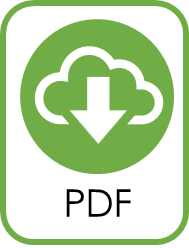Computing
What is the intent of our computing curriculum?
Our ambitious, knowledge-rich curriculum has been sequenced to equip our pupils with the knowledge and skills to ensure they are happy, healthy global citizens, ready to take their place in modern Britain. The broad and balanced curriculum is creative, coherent and inclusive and, together with our Christian values, enables the pupils to be self-motivated, independent learners.
At John Keble, we desire to give every pupil to understand and apply the fundamental principles and concepts of computer science, including abstraction, logic, algorithms and data representation. They will be able to analyse problems in computational terms and have repeated practical experience of writing computer programs in order to solve such problems. Pupils will evaluate and apply information technology, including new or unfamiliar technologies, analytically to solve problems. Finally, pupils will be taught to be responsible, competent, confident and creative users of information and communication technology.
How do we implement the computing curriculum at John Keble School?
Each unit of work is 6 lessons long and designed to last roughly one-half term. The units for key stages 1 and 2 are based on a spiral curriculum. This means that each of the themes is revisited regularly (at least once in each year group) and pupils revisit each theme through a new unit that consolidates and builds on prior learning within that theme. This style of curriculum design reduces the amount of knowledge lost through forgetting, as topics are revisited yearly. It also ensures that connections are made even if different teachers are teaching the units within a theme in consecutive years.
The units in The Teach Computing Curriculum have been written to support all pupils. Each lesson is sequenced so that it builds on the learning from the previous lesson and where appropriate, activities are scaffolded so that all pupils can succeed and thrive. Scaffolded activities provide pupils with extra resources, such as visual prompts, to reach the same learning goals as the rest of the class. Exploratory tasks foster a deeper understanding of a concept, encouraging pupils to apply their learning in different contexts and make connections with other learning experiences.
As well as scaffolded activities, embedded within the lessons are a range of pedagogical strategies, which support making computing topics more accessible. The Teach Computing Curriculum uses the National Centre for Computing Education’s computing taxonomy to ensure comprehensive coverage of the subject. All learning outcomes are categorised by ten strands:
| algorithms | computer networks |
| computer systems | creating media |
| data and information | design and development |
| effective use of tools | impact of technology |
| programming | safety and security |
At the end of each unit, pupils will be given an end of unit task. This will be an opportunity for the pupils to showcase their learning and what they have understood in a task. Class teachers will be able to use it as a tool to assess the pupils.
For a more in depth look at our computing curriculum, download the link:



